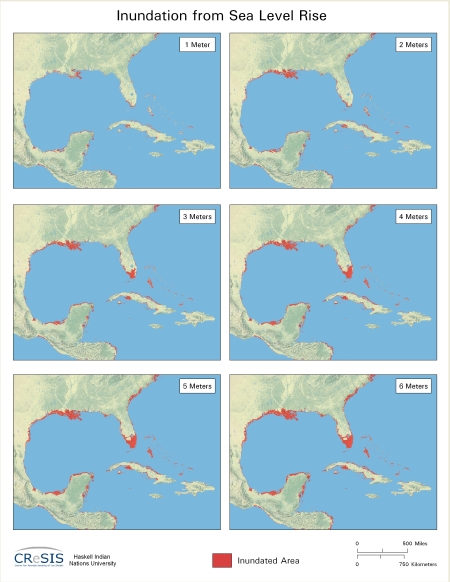Consider a layer cake. How would you build a model that predicts the thickness of a 10 cm cube of frosting spread uniformly around the cake? If the cake is 10 cm tall and 30 cm in diameter (we’re hungry), then the frosting would contribute to a uniform “cake-level rise” of about 0.6 cm. Not particularly indulgent, but times are rough.
The layer-cake model could easily become a super-simplified, super-useless metaphor for models of melting ice sheets. Consider an ocean world with one continent, no atmosphere, just nothing at all. A ball of water, with a two-km thick ice cube at the South Pole, atop the continent. Bake at 60 degrees Celsius for 200 years.
Sea-level models are much more complex than our shopping guide for frosting. And they recently became more complicated.
A heated atmosphere is expected to melt ice sheets over a a longer period of time than you need to consider on a routine trip to the grocery store. Ice atop land runs off into the ocean, raising levels globally as the water works through the system. The Intergovernmental Panel on Climate Change’s Fourth Assessment Report (FAR) concluded that “the last time the polar regions were significantly warmer than present for an extended period (about 125,000 years ago), reductions in polar ice volume led to 4 to 6m of sea level rise.” (From IPCC FAR Working Group I, Summary for Policymakers, p 9, .pdf here.)
A paper in Science last month considers factors left out of modeling sea-level rise. The biggest factor is gravity. The 6,000-foot thick ice that covers much of Antarctica exerts great force on the surrounding ocean, so much so that if that gravity is redistributed, “sea level will actually fall within ~2000 km of the collapsing ice sheet and progressively increase as one moves further from this region.” If the West Antarctic sheet melts, its gravity disperses, too, releasing the water under its sway to rejoin the world’s oceans. A study published 30 years ago remarked on the ice sheet’s gravitational pull, and was then promptly forgotten. Jerry X. Mitrovica, Natalya Gomez, and Peter U. Clark build the observations into a new model of a melted world.
The authors estimate the effects of two other phenomena as well. The weight of ice transforms the ground beneath it, pressing bedrock farther down than it might otherwise “want” to be. Absent the ice sheet, this land might recoil, expelling water that would otherwise settle above it and move the Earth’s axis of rotation about a third of a mile, with its own influence on water sloshing about the seas.
Sea-level is notoriously difficult to model, and occurs over time periods long-enough to seem ridiculous if your primary diurnal concerns are more along the lines of buying frosting than creating a long-term national flood insurance program. But that’s the interesting thing about climate change, isn’t it? Models aren’t (neessarily) forecasts. They are specific predictions based on specific assumptions, a way to investigate how the Earth behaves based on our limited but ever-improving obervations.





 Posted by Eric Roston
Posted by Eric Roston